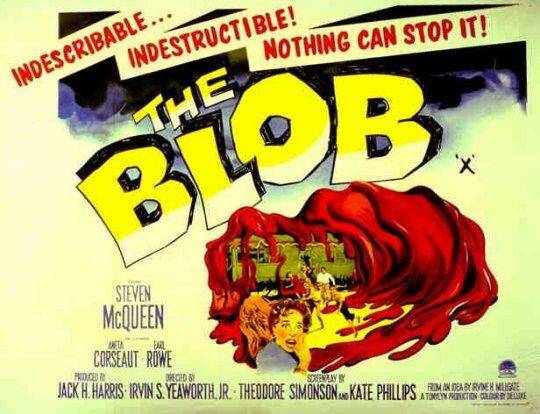The New York Times’ Upshot site explores one of those nifty-sounding political theories that can easily be taken too far. In “The Growing Blue-State Diaspora,” Robert Gebeloff and David Leonhardt write, “residents of many traditionally liberal states have moved to states that were once more conservative. And this pattern has played an important role in helping the Democratic Party win the last two presidential elections and four of the last six.” In particular, migrants from blue states like California and New York “helped” Barack Obama win Colorado, Florida and Virginia, in both 2008 and 2012.
Though Gebeloff and Leonhardt don’t acknowledge it, their article poses a challenge to the “sorting” theory, which suggests that Americans prefer to settle where they can find like-minded voters. In other words, these state-to-state migrants are not the advance forces of an opposition party; instead, they’re reinforcements for the party already in power. Think of someone who decides to move from New York to Texas: Is he more likely to be a supporter of Hillary Clinton or Ted Cruz? Are California expats telling their new neighbors in Idaho that the state needs its own version of Jerry Brown?
“The Growing Blue-State Diaspora” has to cherry-pick some numbers. Gebeloff and Leonhardt write that ex-Californians have helped push Colorado into the Democratic column, but while 6 percent of Colorado residents are from California, a larger 8 percent of Utah residents are from California, and no one thinks the most Republican state in the 2012 presidential election is going to flip anytime soon. Similarly, ex-New Yorkers make up 4 percent of the population in now-purple Virginia, but also 4 percent of the population in steady-red South Carolina.
Another complication to the “blue diaspora” theory is New Hampshire, which Obama won twice. The interactive map accompanying Gebeloff and Leonhardt’s story shows that 25 percent of current Granite State residents were born in Massachusetts — proportionally, the biggest state-to-state migration in America. But not that long ago, most political observers agreed that ex-Bay Staters had helped make New Hampshire the most conservative state in the Northeast, as they were the ones fleeing the Kennedys and “Taxachusetts” for a promised land with less restrictive gun laws, no rule that motorcyclists had to wear helmets and no income or sales tax.
The border-crossers are not a unified voting bloc, and Obama surely won many votes from people who had moved from Massachusetts. But consider the regional differences within the state.
From 1988 (the last conclusive GOP win in a presidential race) to 2012, the Democratic share of the presidential vote in New Hampshire rose by 16 points, from 36 percent to 52 percent. The biggest swing was in Grafton County, which borders Vermont and not Massachusetts, and where the Democratic vote surged from 37 percent to 61 percent.
If there’s a Republican base in New Hampshire, it’s in Rockingham County, which covers the coast between Massachusetts and Maine. Mitt Romney won it with 52 percent, and the Democratic share rose by only 12 points between 1988 and 2012. Of the state’s 10 counties, Rockingham is also presumably the most affected by the Massachusetts–to–New Hampshire migration. It has the highest share of population born in another state, 66 percent (Census data on which states they came from is not readily available at the county level), and the number of votes cast for president in Rockingham went up 68 percent from 1988 to 2012, versus 58 percent for the state as a whole.
Without Rockingham County, Obama would have won New Hampshire by nine points instead of six points. The area with the most migrants from Massachusetts have kept the state purple, while the Democratic trend in Maine and Vermont has been stronger and quicker. (Indeed, exit polls found that Obama ran best among rural voters in New Hampshire, rather than in the suburban spillover from Massachusetts.)
Neither the “sorting” nor the “blue diaspora” theory may explain as much as changes in population density. Software developer Dave Troy got a lot of attention after the 2012 election with a chart showing a “tipping point” of 800 people per square mile: “below 800 people per square mile, there is a 66% chance that you voted Republican. Above 800 people per square mile, there is a 66% chance that you voted Democrat.” He also noted, “98% of the 50 most dense counties voted Obama. 98% of the 50 least dense counties voted for Romney.”
And the “tipping point” theory can reconcile the “sorting” and “blue diaspora” theories by placing them in sequence. First, Republican “sorters” move to fast-growing suburbs and exurbs in population-boom states like New Hampshire. Then, as those states become more urbanized, their newcomers become more ethnically and economically diverse, and more likely to lean Democratic.
This explains California trending Republican during its rapid growth from the 1950s through the 1970s, then trending Democratic from the 1990s onward as population growth cooled and its electorate became almost completely urban (and less white). Colorado and Virginia also became more reliably Republican when newcomers from the Northeast and Midwest began arriving in large numbers, only recently trending Democratic as high population density spread out from Denver and Washington, D.C., respectively.
Florida’s peak Republican period, the 1980s, coincided with the peak presence of ex-New Yorkers (10 percent of Florida’s population in 1980 and 1990, versus 8 percent in 2010). The state narrowly voted Democratic, in 2008 and 2012, only after a significant jump in the foreign-born share of its population.
As for Texas, its tipping point still seems decades away. Before then, Republican Party is bound to figure out how to avoid being urbanized out of existence.








